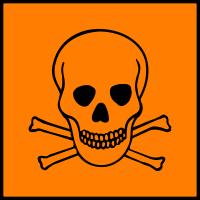|
MSDS Link
|
Download
|
|
Personal Protective Equipment
|
Faceshields, full-face respirator (US), Gloves, Goggles, multi-purpose combination respirator cartridge (US)
|
|
GHS Precautionary statements
|
P261-P280-P305 + P351 + P338-P310
|
|
RID/ADR
|
UN 2922 8/PG 1
|
|
Risk Statements
|
14-23-29-34
|
|
Safety Statements
|
26-36/37/39-45
|
|
Supplemental Hazard Statements
|
Contact with water liberates toxic gas., Reacts violently with water.
|
|
Hazard Class
|
8
|
|
UN Number
|
2922
|
|
Packing Group
|
1
|
|
German water hazard class
|
2
|
|
GHS Pictograms
|

|
|
GHS Pictograms
|

|
|
GHS Signal Word
|
Danger
|
|
GHS Hazard statements
|
H314-H331
|
|
European Hazard Symbols
|
 Toxic (T) Toxic (T)
|
|
Linear Formula
|
ClCOCOCl
|
|
Purity
|
≥96.0% (AT)
|
|
Quality
|
dist.
|
|
Boiling Point
|
62-65 °C(lit.)
|
|
Density
|
1.5 g/mL at 20 °C(lit.)
|
|
Melting Point
|
-10--8 °C(lit.)
|
|
Refractive Index
|
n20/D 1.429(lit.)
|
|
Vapor Density
|
4.4 (vs air)
|
|
Vapor Pressure
|
150 mmHg ( 20 °C)
|